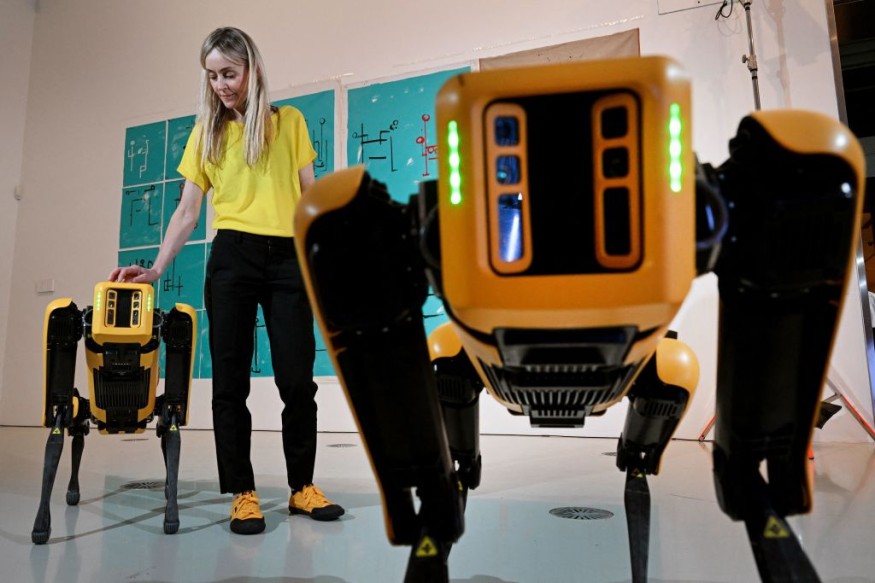Boston Dynamics, an engineering and robotics company known for its viral videos of advanced robots performing stunts like parkour, has shared a new video demonstrating its robot dog, Spot, featuring artificial intelligence. Fast Company reported that these robotic dogs may not bark but they can now talk in complete sentences using generative AI, specifically OpenAI's ChatGPT.
In a video, the robot dogs can answer questions verbally about their duties in clear English. However, talking dogs are still being researched and are not yet available on the market.

Spot's New ChatGPT Feature Can Communicate to People With Less Technical Ability
AI software firm Levatas partnered with Boston Dynamics to integrate OpenAI's ChatGPT into their robot dog, Spot, which can now communicate and respond to humans verbally. Originally designed for use in manufacturing and logistics, the ChatGPT technology enables robot dogs to interpret and respond to questions about their tasks and collected data.
Chris Nielsen, founder and CEO of Levatas, told Fast Company can now query anything they want to ask the robot dogs about their tasks. Boston Dynamics introduced Spot in 2020 with the original goal of carrying out missions or long tasks that they have been programmed. Nielsen said that these tasks include identifying spills and leaks, searching for damages in factories, and many others.
According to Insider, these tasks would need a lot of data gathering in which these robots are capable of collecting vast amounts of technical data that require highly skilled people to handle. Now, ChatGPT allows the data to be communicated to people with less technical expertise by analyzing its data first.
Although the ChatGPT feature has yet to be commercially released, the robot dogs were able to respond to verbal questions in a demonstration.
For example, when asked about the number of inspections in its next mission, Spot replied with the exact number. When asked to describe its previous mission, it was able to provide specific details about where it took place, how long it took, and what was detected.
ChatGPT Help Spot Save More Lives
The news on Spot's new capabilities came just weeks after New York City Mayor Eric Adams announced that the NYPD will be using the robot dogs again during life-threatening missions, like bomb threats and hostages. More so, the city government expects the robots to be used in inspecting hazardous waste sites.
Although Levatas does not work with the NYPD, Nielsen sees a valuable use case for ChatGPT where anyone can communicate with the robot to ask for directions or find out the location of the nearest emergency services facility. The ChatGPT integration is still in its research and development phase and has so far only been demonstrated in the context of industrial equipment inspections.
ChatGPT has been used to develop chat D-ID, a web application that allows users to converse with ChatGPT through an avatar that will soon be customizable. Users have also talked to ChatGPT through a human simulation using a tool made by Bubbles, a video collaboration platform.
Nielsen told Insider that he wants to integrate GPT-4, ChatGPT's latest and most advanced language model, to come up with solutions to complex problems. Levatas is trying to integrate ChatGPT functions a step further by having the Spot units explore facilities, discover equipment and conditions, and report back with safety, security, and maintenance recommendations for the human teams to address.
RELATED ARTICLE: Self-Teaching Robot Dog Can Walk, Roll Over, Navigate Obstacles in Just One Hour of Training
Check out more news and information on Tech & Innovation in Science Times.
© 2026 ScienceTimes.com All rights reserved. Do not reproduce without permission. The window to the world of Science Times.











